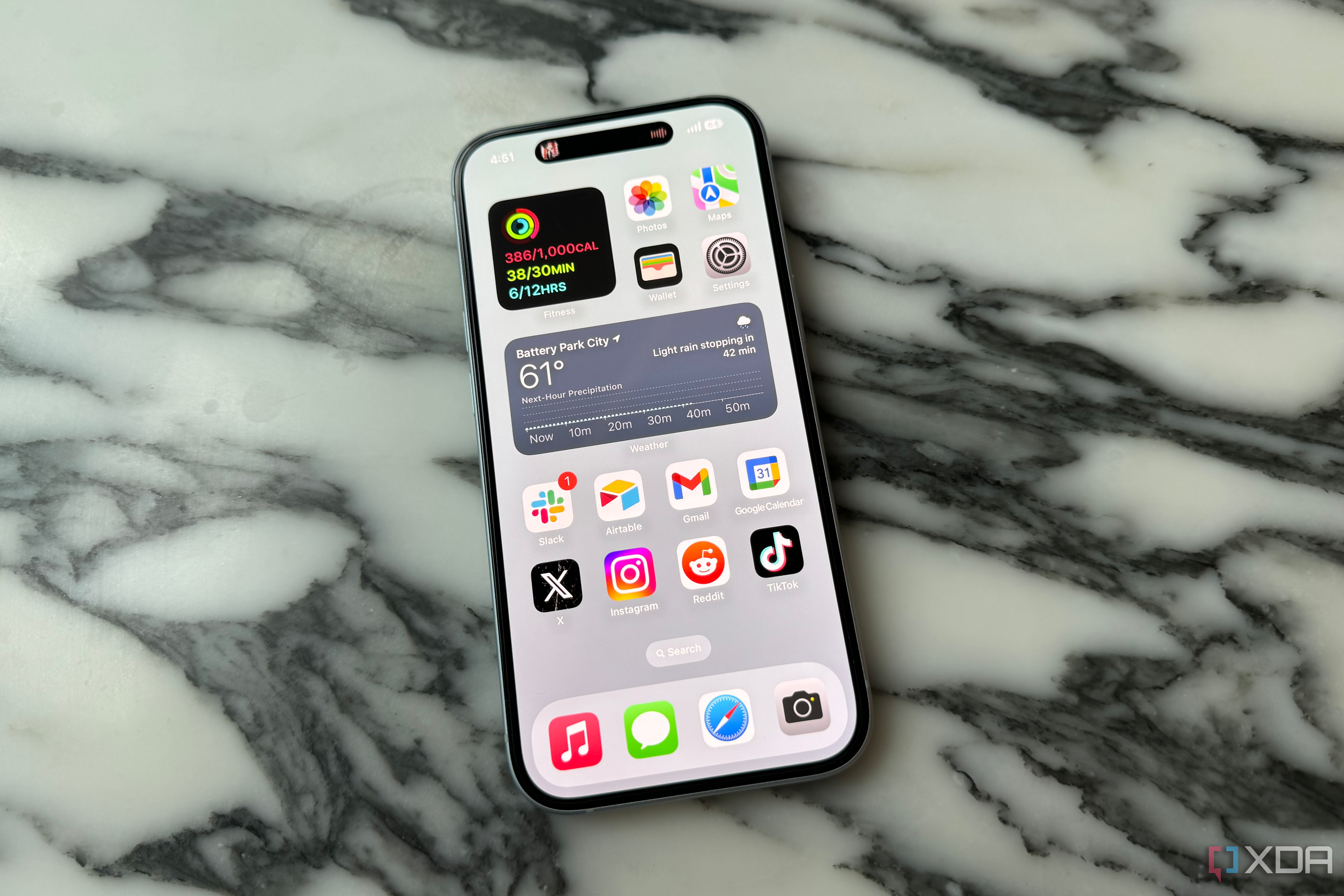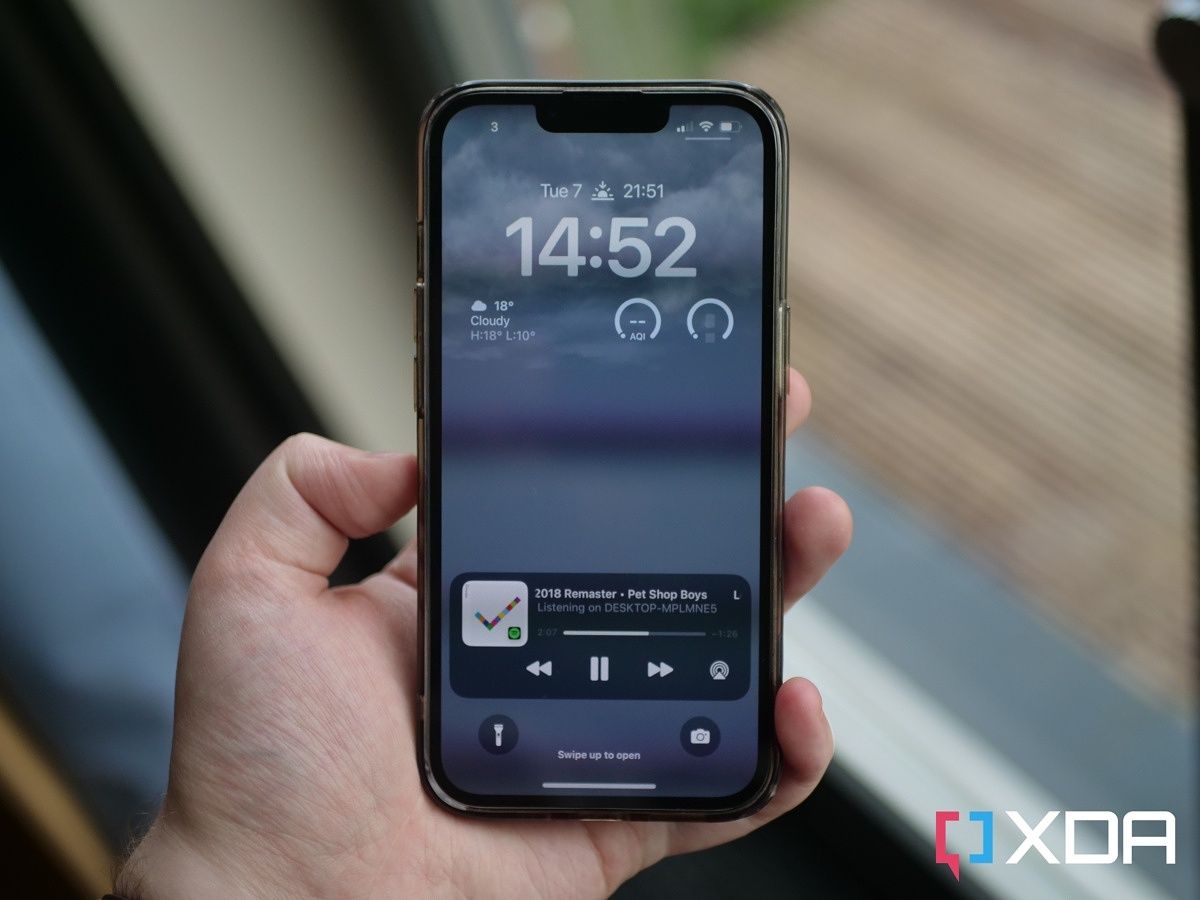Quick Links
After you set up a new iPhone, there are some essentials you may want to familiarize yourself with. Apart from changing your iPhone's wallpaper, you may want to further personalize your Home Screen by adding widgets to it. Widgets not only make its appearance more interesting, but they also make it more functional. If you want to get the most out of your widgets on an iPhone 15 Pro Max or any other model, we can help you get started.
What are widgets on iPhone?
Widgets on iOS are (relatively) large, dynamic icons that provide instant access to the information and content you want at a glance. This can include everything from today's weather to calendar events, breaking news headlines, stock prices, battery levels, and more. On iOS 14 and later, they are viewable from the Today View, Home Screen, and Lock Screen, making them generally accessible.
Widgets are a really convenient way to see pertinent information at a glance and quickly trigger in-app actions. Thanks to iOS 17, widgets are now interactive, allowing you to interact with apps without entering them. If you have smart home devices and a widget for your smart home app, you can quickly turn on the lights, set a scene, or get your favorite music playlist going with just a single tap. The possibilities are endless!
How to add widgets on iOS
Whether you want to add widgets to your Home Screen or the Today View, the process is identical:
- Tap and hold anywhere on the Home Screen or Today View until the icons start to jiggle.
- Hit the plus (+) button in the top left corner.
- You will then see a list of apps that offer widgets. Tap on the one you're interested in.
-
You can scroll horizontally to view the different widget variations, if offered by the app.
- Click the Add Widget button. This will add it to the Home Screen or Today View.
- You can then drag the added widget to reposition it or move it to another page.
-
Click Done when you're done.
How to set up Widget Stacks
Widget Stacks, as the name suggests, are groups of widgets stacked on top of each other. This way, the entire Widget Stack occupies the space of one widget while housing multiple ones that you can scroll through.
- Add a widget to your Home Screen or Today View by following the steps in the previous section.
- Now, add another widget using the same steps. Both widgets should be the same size.
-
Drag the second widget and place it on top of the first one.
- You can continue adding even more widgets to the stack.
- Once you're done, tap the Widget Stack. This will allow you to toggle Smart Rotate and Widget Suggestions if you want to make the stack smarter.
- Click Done when you're done.
-
You can now swipe on the Widget Stack vertically to scroll through the widgets you've added.
How to delete iPhone widgets
To delete a widget or Widget Stack from your Home Screen or Today View, follow these steps:
- Tap and hold on to the widget or Widget Stack.
- Click on Remove Widget or Remove Stack in the Haptic Touch menu.
-
Confirm by hitting the Remove button. This will only remove it from the Home Screen or Today View and won't delete the respective app(s).
How to use widgets on the Lock Screen
iOS also supports Lock Screen widgets, but they look different and offer generally smaller sizes. You can learn more about setting up these widgets and customizing the iPhone Lock Screen. While Lock Screen widgets generally aren't as colorful as Home Screen ones, they serve pretty much the same purpose but live on a different page.
Widgets on iOS are highly capable
As our guide reveals, widgets on iPhone are both easy to set up and highly capable. Through them, you can quickly glance at timely information and trigger certain actions if they're interactive. You can even create custom Home Screen widgets if the apps you've installed don't offer what you're looking for. You can design and implement your own widgets through custom ones based on your personal needs and tastes.



